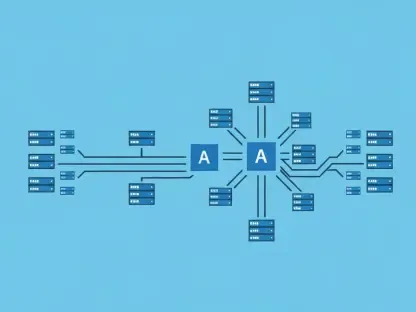In an era where cyber threats evolve at an unprecedented pace, the conventional wisdom of slower, more deliberate software release cycles for ensuring security is increasingly being challenged. Fast software releases, powered by Agile methodologies and Continuous Integration/Continuous Deployment (CI/CD) techniques, are now proving to be a robust enabler for enhanced security. This article delves into the benefits, challenges, and strategic considerations of adopting rapid release cycles within the framework of Agile CI/CD.
The Evolution of Software Deployment Practices
From Waterfall to Agile: The Paradigm Shift
The traditional Waterfall model of software development, characterized by sequential phases and extensive testing before release, often resulted in products that were secure but slow to respond to emerging threats. However, the adoption of Agile methodologies marked a paradigm shift. Agile’s iterative approach not only accelerated the development process but also allowed for more adaptive and responsive security measures. The transition from Waterfall to Agile was driven by the need for greater flexibility and faster delivery. Agile emphasized continuous feedback, incremental progress, and cross-functional collaboration, which collectively enhanced the ability to identify and address security vulnerabilities more dynamically.With Waterfall, security assessments and fixes were often relegated to the end of development cycles, creating a bottleneck that delayed releases. In contrast, Agile integrates security evaluation throughout the development process, providing multiple opportunities to identify and mitigate vulnerabilities early. This means that instead of delivering massive updates sporadically, which could introduce new risks, Agile facilitates smaller, more manageable updates that can be deployed swiftly and safely. As the shift towards Agile became more pronounced, organizations quickly realized the security benefits of faster release cycles. Their ability to respond promptly to threats without compromising on product quality showcased the inherent flexibility and robustness of Agile methodologies.
The Role of CI/CD in Accelerating Agile Development
CI/CD pipelines, as an integral part of Agile methodologies, have revolutionized software deployment. Continuous Integration ensures code changes are automatically tested and merged, while Continuous Deployment automates the delivery of updates to production environments. This automation streamlines the release process, making it possible to deploy updates more frequently without compromising quality. By integrating CI/CD, development teams can identify vulnerabilities early in the development lifecycle. Automated testing, code analysis, and deployment processes reduce the time between identifying a security issue and deploying a fix, thereby minimizing the window of exposure.The influence of CI/CD on Agile development cannot be overstated. CI/CD pipelines facilitate ongoing testing, so each new code commit undergoes rigorous checks before being integrated into the main branch. This reduces the risk of vulnerabilities slipping through the cracks and ensures that only secure, tested code makes it into the final product. Furthermore, the automated nature of CI/CD minimizes human error and speeds up the deployment cycle, which is critical in addressing security threats as they arise. Continuous monitoring and feedback loops inherent in CI/CD also enable teams to respond quickly to any issues post-deployment, thus maintaining a high level of security and stability in production environments.
Case Study: Google’s Response to OpenSSL Vulnerability
Rapid Patching Through Streamlined Processes
The critical OpenSSL vulnerability of 2014 serves as a prime example of the benefits of fast release cycles. Google’s social products team, leveraging a well-integrated CI/CD pipeline, was able to deploy patches rapidly. This swift response contrasted sharply with longer remediation times observed in teams using more traditional processes. The success of Google’s rapid patching demonstrates that the speed of release is not inherently detrimental to security. On the contrary, having efficient processes in place enables teams to react swiftly to vulnerabilities, reducing the risk of exploitation.The case study of Google’s response to the OpenSSL vulnerability illustrates the tangible benefits of streamlined CI/CD processes. By adopting a well-integrated CI/CD pipeline, Google’s team was not only capable of rapid patch deployments but also minimized the disruption usually associated with emergency updates. The contrasting slower responses from other teams highlight how agile processes can turn speed into an asset rather than a liability. The efficiency of these rapid cycles is grounded in the automation and regularity of the CI/CD approach. Continuous monitoring, automatic testing, and instant patch deployment significantly reduce the window of exposure to vulnerabilities, making it clear that structured and agile processes are crucial for maintaining security in fast-paced development environments.
Process Efficiency Over Personnel Capacity
The difference in response times during the OpenSSL incident was attributed not to the engineers’ capability but to the presence of streamlined processes. Teams with robust CI/CD pipelines could iterate quickly, integrating critical updates without the bottleneck of manual interventions or prolonged testing cycles. This case underscores the importance of process efficiency. Even the most skilled personnel can be bogged down by inadequate systems. In contrast, even less experienced teams can achieve high-security standards with the right processes and automation tools in place.Efficiency in processes often outweighs the sheer capacity of personnel when it comes to rapid software releases. Google’s ability to quickly address the OpenSSL vulnerability serves as a reminder that effective CI/CD processes empower engineers by removing the obstacles that typically slow down security updates. This efficiency is not just about speeding up the release cycle but ensuring that each release is secure, thoroughly tested, and stable. Streamlined processes ensure that each step, from code commit to deployment, is optimized for speed and security, enabling quicker remediation of vulnerabilities. Therefore, focusing on process efficiency rather than merely increasing team capacity can have a profoundly positive impact on an organization’s security posture.
Challenges and Solutions in Adopting Rapid Release Cycles
Addressing Complexity in Low-Level Infrastructure
Deploying updates in low-level infrastructure presents unique challenges due to potential instability and performance issues. These complexities often discourage frequent updates, ironically increasing security risks by making necessary patches larger and more error-prone. Frequent, incremental updates are crucial for maintaining security in low-level infrastructure. Automated testing and deployment tools can help manage the complexity, ensuring that each update, no matter how small, is rigorously tested before deployment.The complexity associated with low-level infrastructure demands a disciplined approach to updates. Infrequent updates, driven by fears of instability, often result in significant patches that are complex to manage and more susceptible to introducing new vulnerabilities. Automated tools play a vital role in mitigating these challenges by facilitating continuous, incremental updates that are less disruptive and more secure. These tools consistently test the new code against the existing environment, ensuring stability while integrating minor changes. This constant, iterative approach minimizes the risk of major disruptions and keeps the system secure and up-to-date. As the infrastructure itself evolves, maintaining a CI/CD pipeline for low-level updates fosters a more resilient and secure environment.
Automation: The Key to Maintaining Speed and Security
Automation is central to the success of rapid release cycles. Automated code scanning, extensive testing, and continuous monitoring enable teams to maintain high release speeds without compromising security. These tools ensure that vulnerabilities are identified and addressed promptly, reducing human error and accelerating the deployment process. Balancing human oversight with automated processes is crucial for effective security management. While automation handles routine tasks efficiently, human expertise is indispensable for more complex, nuanced activities such as reviewing critical code and discussing architectural changes.Automated tools enhance the security of rapid release cycles by efficiently managing the repetitive, time-consuming tasks that are prone to human error. Automated code reviews, vulnerability scanning, and performance testing provide a layer of security that is both thorough and swift, allowing teams to focus on more strategic aspects of development. Continuous monitoring tools ensure that once deployed, the software is under persistent scrutiny for any emergent issues. However, human oversight remains essential for areas where judgment and expertise are required. This balanced approach leverages the strengths of both automation and human insight, ensuring that security is not compromised for speed. Effective automation frameworks, complemented by expert review, build a robust defense against the evolving landscape of cyber threats.
Best Practices for Secure Agile CI/CD
Establishing a Culture of Frequent Updates
A culture of regular updates is vital for maintaining security. Frequent patches ensure that vulnerabilities are addressed promptly, preventing them from becoming critical threats. This habit of continuous improvement aligns with Agile principles, fostering a proactive approach to security. Security patches are often not clearly labeled, making regular updates even more essential. This practice ensures that all potential vulnerabilities, known and unknown, are addressed in a timely manner.Creating a culture of regular updates requires buy-in from all stakeholders, including developers, testers, and operations teams. It involves instilling a mindset where frequent updates are the norm rather than the exception, ensuring that security is a continuous concern rather than a sporadic focus. This cultural shift aligns with Agile principles, emphasizing continuous improvement and responsiveness. By regularly updating software, organizations can mitigate the risk of unresolved vulnerabilities accumulating over time. Moreover, integrating security into the everyday workflow reduces the pressure associated with emergency patches and fosters a more proactive approach. This culture of frequent updates also encourages transparency and accountability, ensuring that security is a shared responsibility across the entire development lifecycle.
Integrating Security into the Development Lifecycle
Security should be integrated into every stage of the development lifecycle. This involves incorporating security checks into CI/CD pipelines, conducting regular code reviews, and performing security testing as part of the continuous integration process. By embedding security into the development process, teams can identify and mitigate risks early, ensuring more secure software releases. Integrating security throughout the development lifecycle requires coordination and collaboration across different teams. Development, security, and operations teams need to work together to embed security practices into CI/CD pipelines. This holistic approach ensures that security is not an afterthought but a fundamental aspect of the development process.Teams should adopt tools and practices that facilitate this integration, such as automated security testing, static and dynamic analysis, and continuous monitoring. Regular code reviews by security experts further enhance the security posture, catching issues that automated tools might miss. By making security an integral part of the development process, organizations can ensure that each release is secure from the outset, reducing the risk of vulnerabilities slipping through the cracks. This integration also streamlines the process of addressing security issues, making it easier to deploy fixes rapidly and maintain a high level of security in production environments.
Overcoming Resistance to Change
Education and Training
In an age where cyber threats are advancing at an incredible speed, the traditional notion of slow, methodical software release cycles to ensure security is being increasingly questioned. Agile methodologies and Continuous Integration/Continuous Deployment (CI/CD) techniques are driving a new paradigm, where rapid software releases are emerging as a strong foundation for improved security. Contrary to the dated belief that faster releases might compromise security, the agility provided by these modern practices actually enhances it by allowing for quicker patches and updates. This shift requires an understanding of the benefits, such as accelerated problem-solving and adaptability; the challenges, including potential quality control issues and the need for skilled teams; and the strategic considerations, like prioritizing robust testing frameworks and incorporating automated tools for seamless integration. This article explores the multifaceted aspects of embracing rapid release cycles within the Agile CI/CD environment, offering insights into how this approach can fortify security while meeting the demands of today’s fast-paced digital landscape.









